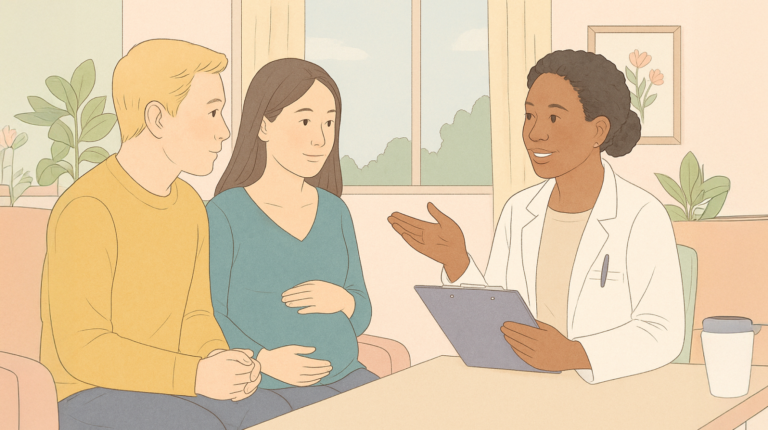In a landmark move to protect children’s health, the U.S. Food and Drug Administration (FDA) has introduced new guidelines to limit lead levels in baby foods.
This decision comes after years of alarming reports about the presence of toxic metals in infant diets. As part of the “Closer to Zero” initiative, these guidelines aim to reduce exposure to lead, a contaminant known to cause developmental and behavioral issues in children.
At Cradlewise, we know how overwhelming it can be to navigate your child’s nutritional safety. Let’s break down what these new guidelines mean for you and how you can make informed choices for your baby’s health.
What prompted the FDA’s action?
Lead exposure poses severe risks to children, including developmental delays, reduced IQ, and behavioral issues. Even low levels of lead can have lasting effects on a child’s health. Reports, such as the 2021 congressional investigation into baby food safety, revealed alarming levels of toxic metals—including lead, cadmium, arsenic, and mercury—in popular baby food products.
These discoveries pushed advocacy groups and parents to call for stricter safety rules from regulators.
For decades, there were no specific federal limits for lead in most baby foods, leaving a significant gap in consumer protection. The FDA’s recent action is a response to mounting evidence and public pressure to address this issue.
FDA’s new guidelines on baby food
The FDA’s new guidelines establish specific limits for lead levels in baby foods as part of the “Closer to Zero” initiative. These limits are designed to minimize the risk of lead exposure during critical developmental stages. Here is a detailed breakdown:
- 10 parts per billion for fruits, vegetables (excluding single-ingredient root vegetables), mixtures (including grain- and meat-based mixtures), yogurts, custards/puddings, and single-ingredient meats;
- 20 parts per billion for single-ingredient root vegetables; and
- 20 parts per billion for dry infant cereals.
Inclusions: The guidelines apply to baby food products packaged in jars, pouches, tubs, and boxes. These are common formats that parents rely on for convenience and portion control.
Exclusions: Notably, the regulations do not cover infant formula, beverages, snack foods (like puffs or teething biscuits), or products marketed to toddlers. This exclusion has been a point of concern among experts and consumer groups.
Impact of implementation
While these guidelines are voluntary, they set a clear benchmark for manufacturers to strive toward, signaling a commitment to enhanced safety standards.
“ For babies and young children who eat the foods covered in today’s draft guidance, the FDA estimates that these action levels could result in as much as a 24-27% reduction in exposure to lead from these foods.”
Additionally, these measures encourage ongoing innovation in agricultural practices, food processing, and packaging to reduce contamination.
How these limits will impact baby food safety
The FDA’s guidelines are expected to:
- Encourage manufacturers to adopt stricter quality control measures.
- Reduce the overall lead exposure in infants, contributing to healthier growth and development.
- Raise awareness among parents and caregivers about the importance of monitoring baby food safety.
However, the effectiveness of these measures will depend on industry compliance, as the limits are currently voluntary. While the FDA’s initiative is a step forward, further efforts are necessary to ensure accountability and long-term safety improvements.
Concerns and criticisms
Despite the progress, the FDA’s guidelines have faced criticism for being insufficient. Key concerns include:
- Voluntary Nature: The guidelines are not mandatory, which may limit industry-wide adherence.
- Limited Scope: They do not cover all baby food products, such as teething biscuits and puffs, which may also contain toxic metals.
- No Safe Threshold: Experts argue that no level of lead exposure is entirely safe for children, highlighting the need for stricter regulations.
Consumer advocacy groups, such as Consumer Reports, have urged the FDA to establish enforceable standards and expand the scope of these regulations.
What this means for parents and caregivers
As a parent, you might be wondering—what can I do to keep my baby safe? The good news is that there are simple, practical steps you can take to reduce lead exposure and make informed choices about your baby’s diet.
Here are tips that might help:
- Diversify the Diet: Offering a variety of foods reduces the risk of exposure to any single contaminant.
- Wash and Prepare Fresh Foods Properly: Rinsing and peeling fruits and vegetables can help remove surface contaminants.
- Stay Informed: Keep track of product recalls and safety alerts related to baby food.
- Check Labels: Look for transparency in ingredient sourcing and adherence to FDA guidelines.
By combining informed choices with the FDA’s new measures, parents can significantly reduce potential risks.
Conclusion
The FDA’s new lead limits for baby food mark an important step toward safeguarding children’s health. While these guidelines represent progress, they also highlight the need for continued vigilance and advocacy.
Ensuring safe and nutritious options for infants requires the combined efforts of regulators, manufacturers, and parents. By staying informed and supporting initiatives like “Closer to Zero,” we can create a safer future for the next generation.



